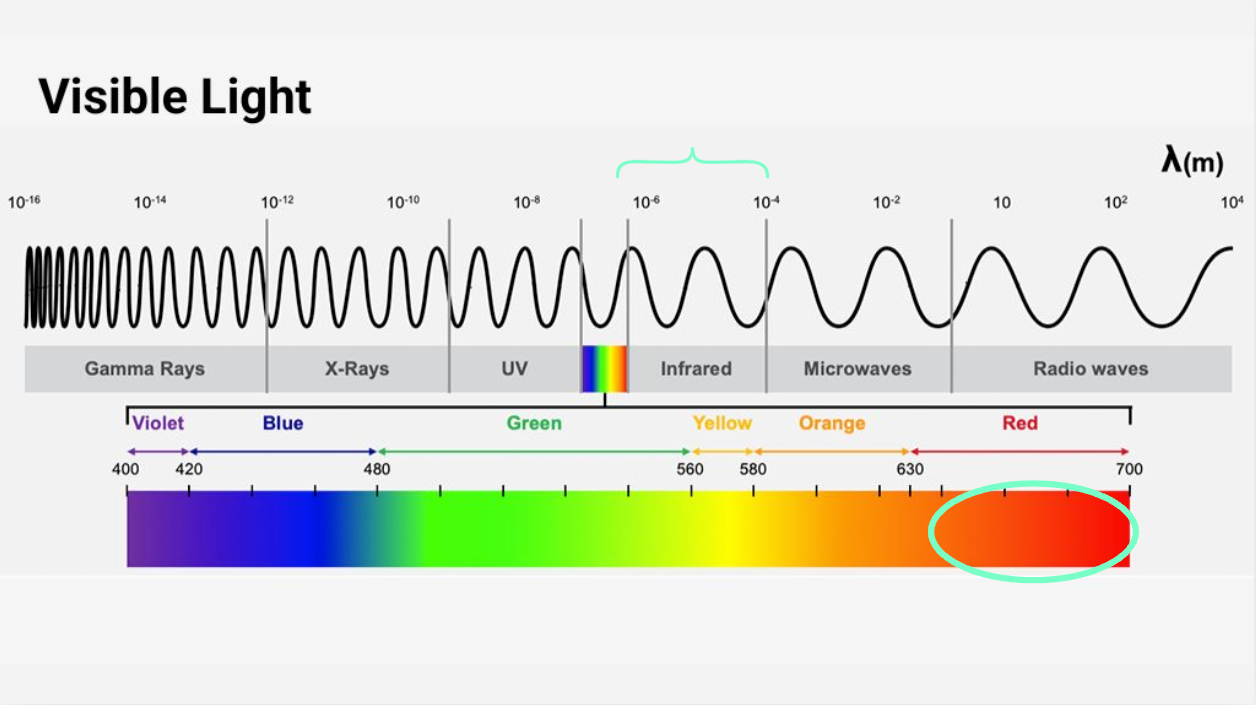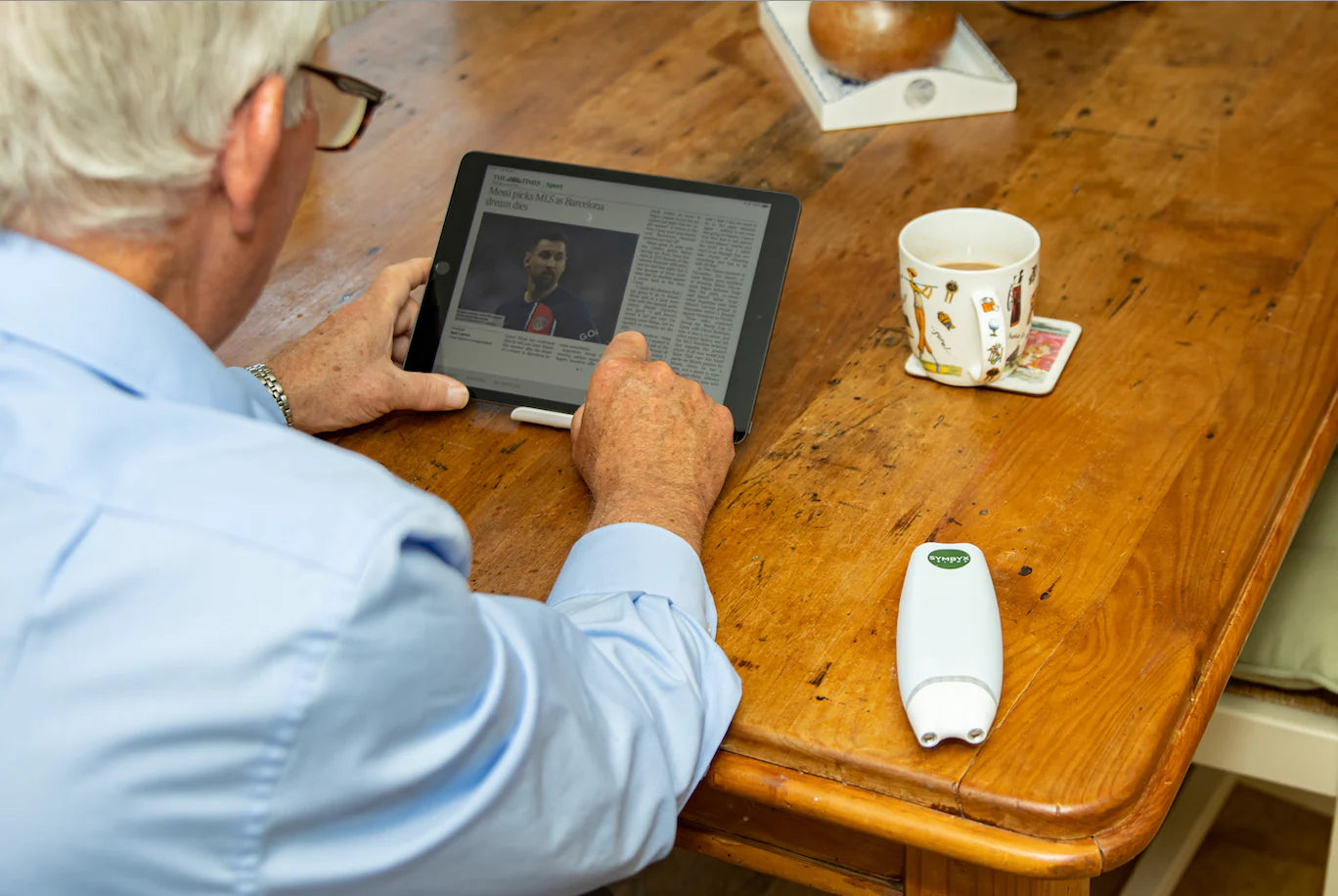If you have been researching light therapy, you've probably come across both infrared and red light devices. With so much information out there on technical parameters and wavelengths, it's easy to feel overwhelmed. What's the difference?
As it turns out, infrared and red light therapy have different properties and therefore different applications. Using one (or both) can help you achieve different health goals.
In this blog, we will answer the question of "what is the difference between infrared and red light therapy?" in detail. The goal is to help you make an informed decision about what kind of device might benefit you the most.
What are the different kinds of light therapy?
Light therapy, low level laser therapy, or "photobiomodulation" (PBM), is the application of light on the body, for a therapeutic effect. Importantly, the specific wavelength of light being used in a device, plays an important role in its therapeutic effect. The 2 main types that we will discuss today are:
-
Visible light wavelengths
-
Infrared light wavelengths
Light therapy devices using visible light is typically defined has having wavelengths between approximately 380 and 750 nanometers (nm). This is where red light therapy fits in, having a wavelength of between approximately 630 and 700 nm.
Infrared light therapy, on the other hand, typically uses wavelengths between 780 nm to 1 millimetre (mm). This means that infrared light has longer wavelengths compared to the colours on the visible light spectrum, including red light.
Near infrared light therapy light falls somewhere between red and infrared light - it's just outside the visible light spectrum and therefore still invisible to the naked eye.

Source: Photo taken from Datacolor and modified.
That's why devices using a near infrared or infrared wavelength, do not show any colourful lights when turned on. You will only be able to see infrared light if you look through special kinds of cameras. With that being said, powerful wavelengths of light energy are still being emitted, and so it's not recommended to stare directly into a light emitting diode when your devices are switched on.
Different uses of red and infrared light therapy
Since infrared has longer wavelengths compared to red light therapy, research suggests it can penetrate deeper into the body. This means that infrared and red light therapy are useful for different things.
Benefits of red light therapy
The benefits of using a red light therapy device reach far and wide. Due to its shorter wavelength and relatively shallow depth of penetration, red light therapy is commonly used for treating issues closer to the skin's surface. This includes reducing acne scarring, skin rejuvenation, hair growth, improving skin health and skin's appearance, and much more.
But how does it work? Research has suggested red light therapy can be beneficial by (1-5):
-
Improving blood flow and promoting circulation
-
Stimulating keratinocytes, which promote wound healing and health
-
Treating ulcers, wounds and skin autoimmune conditions (such as psoriasis, dermatitis and vitiligo)
-
Reducing superficial nerve pain, such as in post-shingles pain and some kinds of peripheral neuropathy of the feet or hands
-
Increasing collagen production by stimulating fibroblasts
Benefits of infrared light therapy
Since wavelengths used in infrared light therapy penetrates deeper, it is commonly used to treat issues deeper in the body. Benefits may include (1-5):
-
Reducing pain by modulating nerves
-
Controlling excess inflammation
-
Penetrating deeply to treat arthritis, joint and disc problems
-
Modulating the gut microbiome
-
Stimulating the gut-brain axis for treatment of conditions such as Parkinson's
-
Nerve repair, such as in peripheral neuropathy
-
Reducing brain fog and improving mood, cognition and concentration
-
Increasing energy at the cellular level
-
Reducing oxidative stress and stimulating the body's anti-oxidant capacity
-
Improving lymphatic drainage by stimulating lymph vessels
-
Improving athletic performance and recovery
When should I use infrared vs red light therapy?
Choosing red, near infrared, or infrared light therapy depends purely on your end goal. What are you trying to treat?
For example, if you're looking to treat pain and inflammation, deeper penetration into human skin is beneficial and therefore you'd opt for an infrared light therapy device.
If you're looking to treat more surface level, a red light therapy device may do the trick, by promoting blood flow and encouraging tissue repair (2).
It doesn't matter if you're looking for skin rejuvenation or pain relief. When it comes to light therapy, what's more important, is that you read the research surrounding a particular device and its wavelengths, to see if it's suited for your needs.
Pro Tip: It may also be worth reaching out to your health specialist to get their opinion. Some light therapy companies also offer guidance in choosing a device. The SYMBYX team offers free consultations and can even put you in touch with their Clinical Support team, a group of practising health professionals who can help offer insights into what device is best for you.
Can you use both infrared and red light therapy?
Sometimes, you may find yourself needing to treat both superficially and deeper in the body - what do you do then? There are some devices out there that combine infrared and red light therapy.
For example, if you're looking to support brain health, a light therapy helmet such as the SYMBYX Neuro wellness helmet, which combines red and near infrared light wavelengths, could be helpful.
Concluding thoughts
In summary:
-
Red light has a shorter wavelength which can mean less depth of penetration, making it good for treating closer to the skin's surface.
-
Near infrared and infrared light therapy have a longer wavelength and deeper penetration, allowing it to treat deeper within the body.
-
Neither is better - it depends purely on what you're trying to treat.
-
When choosing a device, be sure to check if the devices' technical parameters have been researched before.
-
If unsure, you may want to ask a health professional for their opinion.
If you were considering a SYMBYX device and would like some guidance on which device is right for you, please email our team at info@symbyxbiome.com. You can request to be put in contact with Clinical Support, where our clinicians can help you choose the right device, and provide you with the resources to maximise results from your light therapy protocols.
We hope you found this guide helpful!
==
References:
1) Jagdeo JR, Adams LE, Brody NI, Siegel DM. Transcranial red and near infrared light transmission in a cadaveric model. PLoS One. 2012;7(10):e47460. doi: 10.1371/journal.pone.0047460. Epub 2012 Oct 15. PMID: 23077622; PMCID: PMC3471828.
2) Barbosa LS, Parisi JR, Viana L do C, Carneiro MB, Silva JRT da, Silva ML da, Dias Novaes R, Sousa de L. The photobiomodulation (658, 830 and 904nm) on wound healing in histomorphometric analysis. Fisioter mov. 2020;33:e003318.
3) Salehpour F, Sadigh-Eteghad S, Mahmoudi J, Kamari F, Cassano P, Hamblin MR (2023). Photobiomodulation for the Brain: Photobiomodulation Therapy in Neurology and Neuropsychiatry. Springer Charm. https://doi.org/10.1007/978-3-031-36231-6.
4) Tsai SR, Hamblin MR. Biological effects and medical applications of infrared radiation. J Photochem Photobiol B. 2017 May;170:197-207. doi: 10.1016/j.jphotobiol.2017.04.014. Epub 2017 Apr 13.
5) Hamblin MR. Mechanisms and applications of the anti-inflammatory effects of photobiomodulation. AIMS Biophys. 2017;4(3):337-361.
6) Hamblin MR, Demidova TN. Mechanisms of low level light therapy. Proc. SPIE 6140, Mechanisms for Low-Light Therapy, 614001. 2006.

